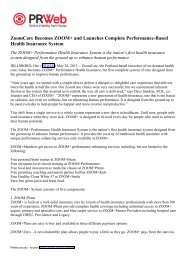The Business of Cities 2015
jll-business-of-cities-report
jll-business-of-cities-report
Create successful ePaper yourself
Turn your PDF publications into a flip-book with our unique Google optimized e-Paper software.
JLL<br />
<strong>The</strong> <strong>Business</strong> <strong>of</strong> <strong>Cities</strong> <strong>2015</strong> 11<br />
New forms <strong>of</strong> data are also enhancing the way cities can be benchmarked and measured. <strong>The</strong> availability <strong>of</strong><br />
sensors and GPS trackers allow movement and congestion in cities to be assessed more accurately, as the<br />
INRIX Traffic Scorecard, Castrol Magnatec Stop-Start Index, and Human Data’s Most Active <strong>Cities</strong> all show.<br />
<strong>The</strong>se highlight trends that have not previously been visible; for example, low congestion in Madrid and<br />
Toronto, high recreational activity in Berlin and Washington D.C., and much higher peak-time transport loads<br />
in emerging cities than established cities.<br />
<strong>The</strong> uses and abuses <strong>of</strong> city indices<br />
<strong>The</strong> science <strong>of</strong> city indices is becoming more refined. <strong>The</strong>ir synthesis <strong>of</strong> complex statistical and perception data<br />
can help decision makers in cities and businesses to track trends, watch movers, observe the effects <strong>of</strong> policy<br />
change, and signpost progress in achieving objectives.<br />
At the same time, there is still potential for error and distortion in the way indices measure city performance.<br />
Among those published in 2014 and <strong>2015</strong>, we observe three common challenges that can result in skewed or<br />
misleading measures:<br />
• Cultural bias: Many studies still rely on the commentary and opinion <strong>of</strong> Western audiences, <strong>of</strong>ten<br />
employees or clients in an organisation’s networks. This is despite the fact that, as McKinsey has shown,<br />
well over a quarter <strong>of</strong> global high-value companies are now based in BRICs and other emerging countries. 5<br />
<strong>The</strong> failure to track all patterns <strong>of</strong> migration and attraction leads some cities to be under-rated compared to<br />
their assets or reputation in dynamic growing markets.<br />
• Inclusivity: For time and cost reasons, many indices elect only to cover cities above a certain population<br />
size or GDP. This is understandable, but <strong>of</strong>ten results in high-quality or best-practice cities being excluded<br />
because they are just outside the cut-<strong>of</strong>f point. This especially affects cities in low-population regions such<br />
as Scandinavia and Australasia.<br />
• Scale <strong>of</strong> data: While cities are becoming decoupled from the performance <strong>of</strong> their nations, data limitations<br />
or risk-averse models <strong>of</strong> data collection mean that cities can be represented by national figures when being<br />
measured. This can result in misrepresentations <strong>of</strong> a city’s real assets, especially in countries where talent,<br />
infrastructure or brand value is mostly absorbed by one or two leading cities (e.g. Russia, Spain).<br />
<strong>The</strong>se limitations, and others, show that city indices must be treated with caution if being used as a diagnostic<br />
tool. <strong>The</strong> classifying lens <strong>of</strong> indices can <strong>of</strong>ten screen out many <strong>of</strong> the unique characteristics or features <strong>of</strong> cities.<br />
An index score may incorporate factors that a city can change through policy or strategy (e.g. productivity,<br />
infrastructure) within the same frame as things it cannot (e.g. geographical location, climate, capital city<br />
status). In so doing, it may obscure the opportunities that cities have to improve their comparative position or<br />
performance.<br />
<strong>The</strong>re are several ways cities and decision makers can mitigate these deficits in clarity and visibility. <strong>The</strong>se can<br />
include better data transparency, improved communication <strong>of</strong> assets, and even partnership with other cities to<br />
raise standards and create new metrics. But perhaps the most important is to consult the widest possible suite<br />
<strong>of</strong> city indices and benchmarks.








